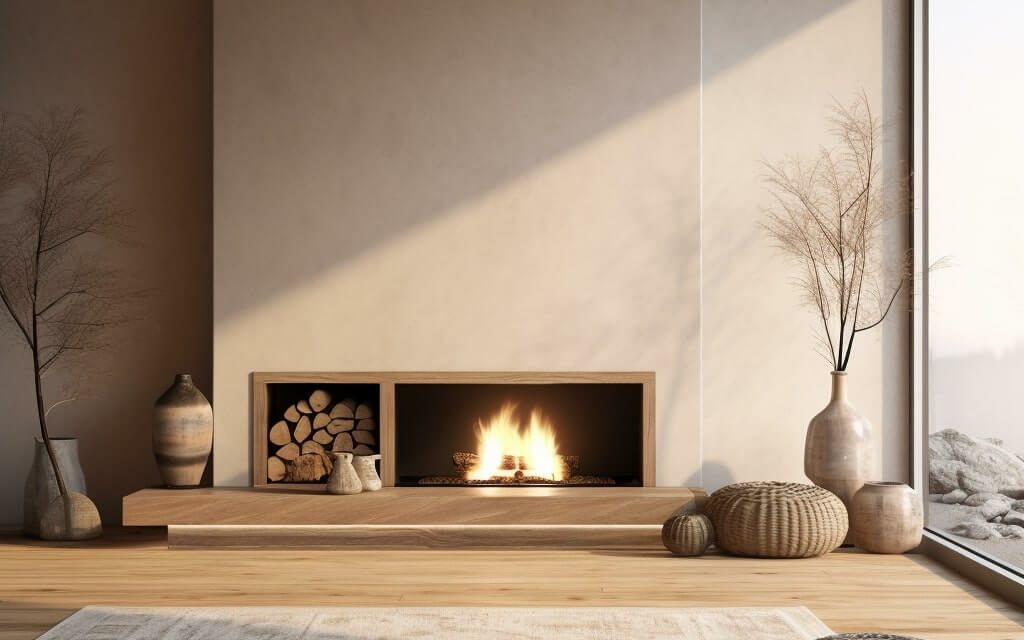Welcome to the serene world of Japandi fireplaces.
As a connoisseur of refined aesthetics and the warmth that a fireplace brings, I was naturally drawn to this East-meets-North design movement.
Japandi, a harmonious blend of Japanese and Scandinavian styles, holds a unique appeal.
Its focus on minimalistic design, functionality, and the use of natural materials translates into truly inviting, tranquil fireplaces.
These creations are more than just heat sources—they’re central elements of our living spaces that exude calm and foster connection.
In this blog, I explore the exquisite simplicity and elegance of Japandi fireplaces.
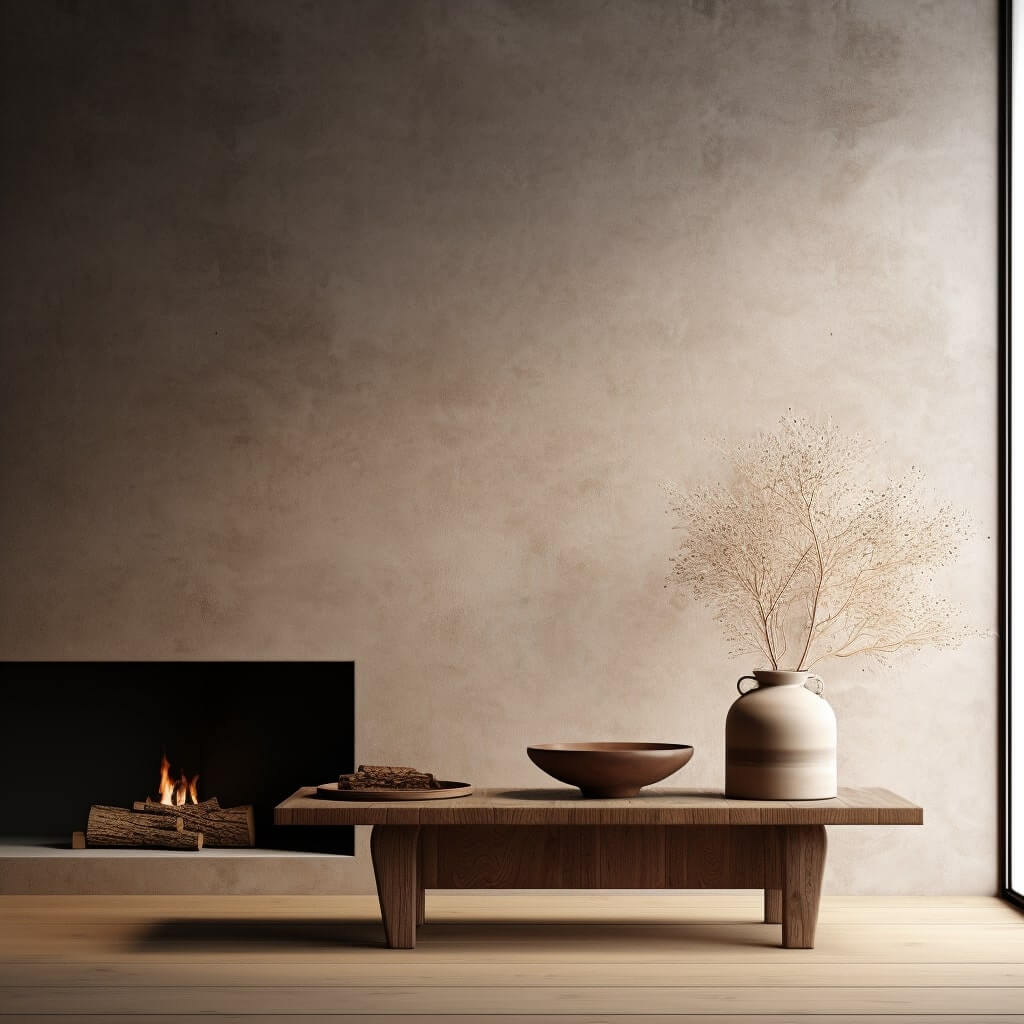
What is Japandi Style?
Japandi is the fusion of two seemingly distant worlds. Japanese design, rooted in Zen philosophy, brings a sense of calm, simplicity, and connection to nature.
Scandinavian, or Nordic design, on the other hand, emphasizes functional simplicity and warm coziness.
When merged, these two philosophies create Japandi – a design movement that balances minimalism with comfort, and function with form.
In a Japandi-styled space, every object has a purpose and beauty, creating a serene, decluttered environment.
From this elegant and understated style, Japandi fireplaces emerge – pieces that elevate our homes into tranquil sanctuaries.
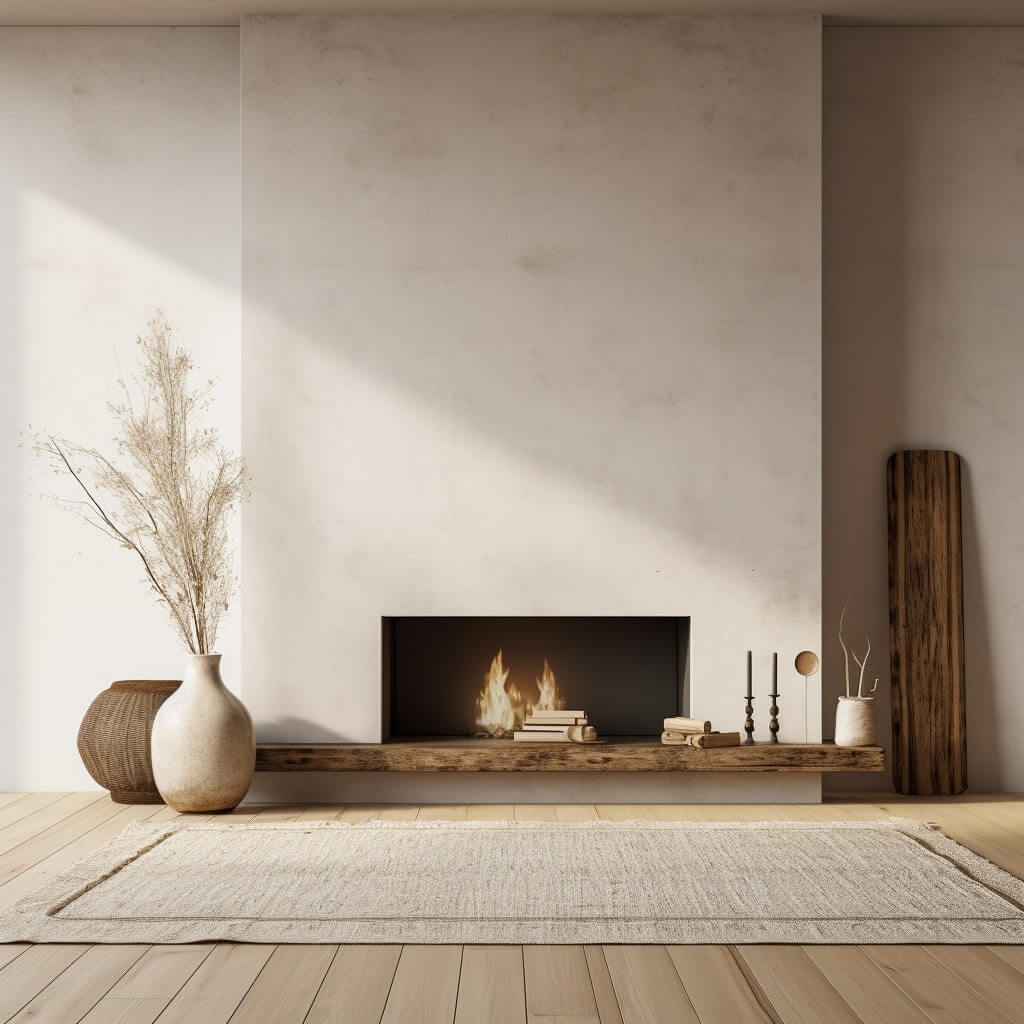
Key features of Japandi fireplaces
Minimalist Design
The charm of Japandi style lies in its minimalist aesthetics, and this is beautifully represented in Japandi fireplaces.
Stripped down to essential components, these fireplaces embrace simplicity, without sacrificing warmth or functionality.
The designs avoid unnecessary adornments and maintain clean lines, letting the structure and material speak for itself.
A Japandi fireplace may seem stark at first glance, but upon closer examination, you can appreciate the complex interplay of form and space that the minimalist design brings.
It’s not merely about having less, but about making the most out of what we choose to keep. In this essence, each Japandi fireplace, with its minimalist charm, becomes a work of art that serves as a tranquil focus point in a room.
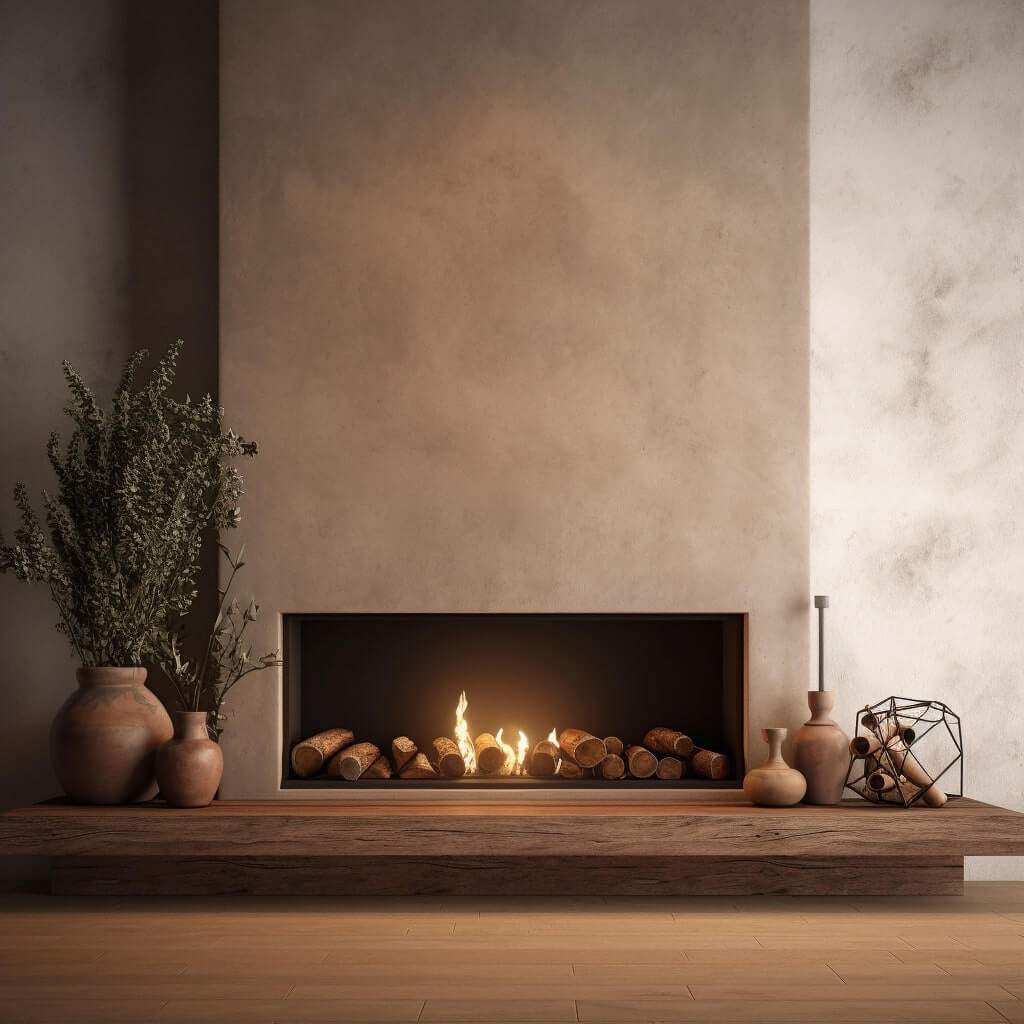
Neutral Colors
The color palette in Japandi style is largely inspired by nature, bringing a sense of tranquility and harmony.
Japandi fireplaces predominantly use neutral colors such as soft whites, cool grays, and muted earth tones.
These colors create a soothing and inviting ambiance, ideal for relaxation.
The color of your Japandi fireplace, whether it’s the calming gray of stone or the soft white of plaster, should blend seamlessly with your overall interior color scheme.
This synchronization of color fosters a peaceful and serene environment that is the essence of Japandi.
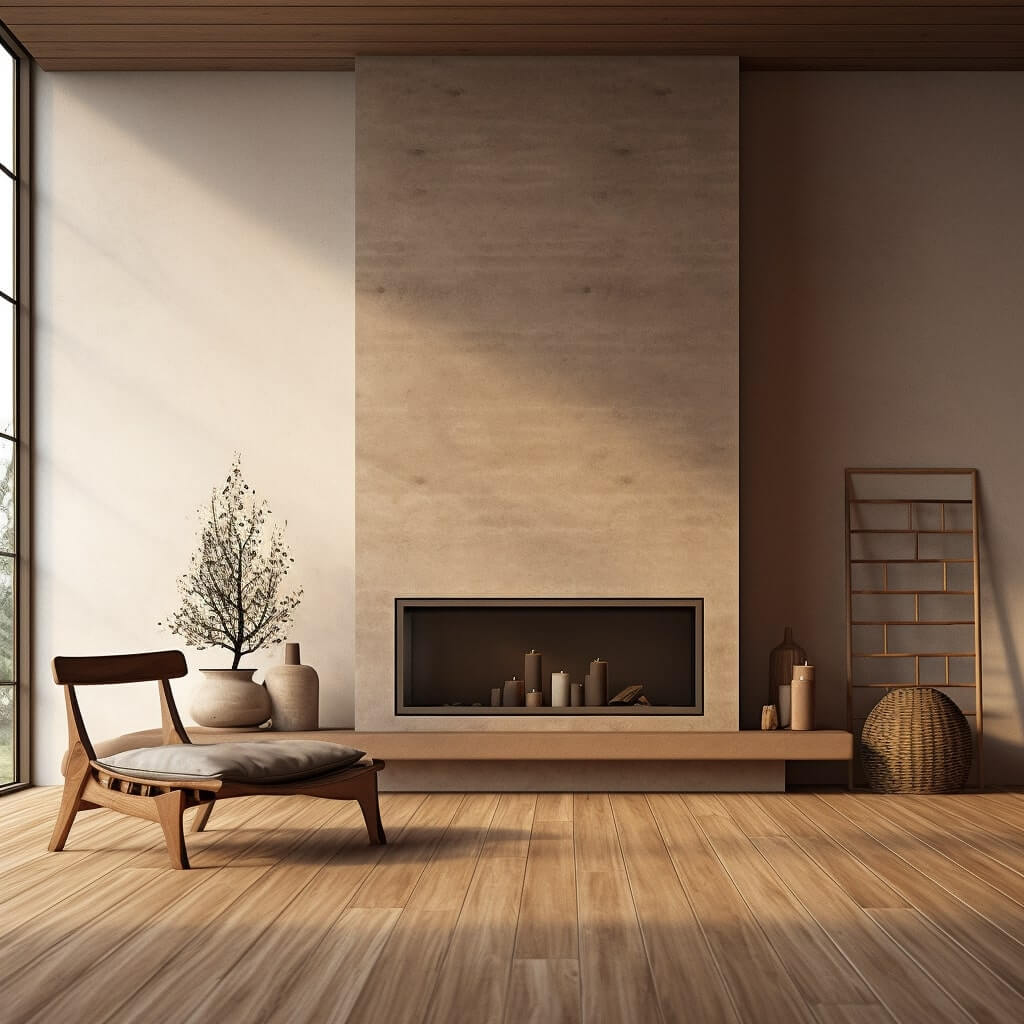
Natural Materials
The use of natural materials is a distinguishing feature of Japandi fireplaces.
This design philosophy values authenticity, and what could be more authentic than materials sourced from nature itself?
Wood, stone, clay, or even concrete, are commonly used in crafting these fireplaces.
The aim is to maintain a close connection with the natural world even while indoors. Wood, with its grains and knots, offers a warm, organic touch.
Stone and clay lend a sense of ageless beauty and durability.
Even concrete, though man-made, provides a natural, raw aesthetic that complements the Japandi style.
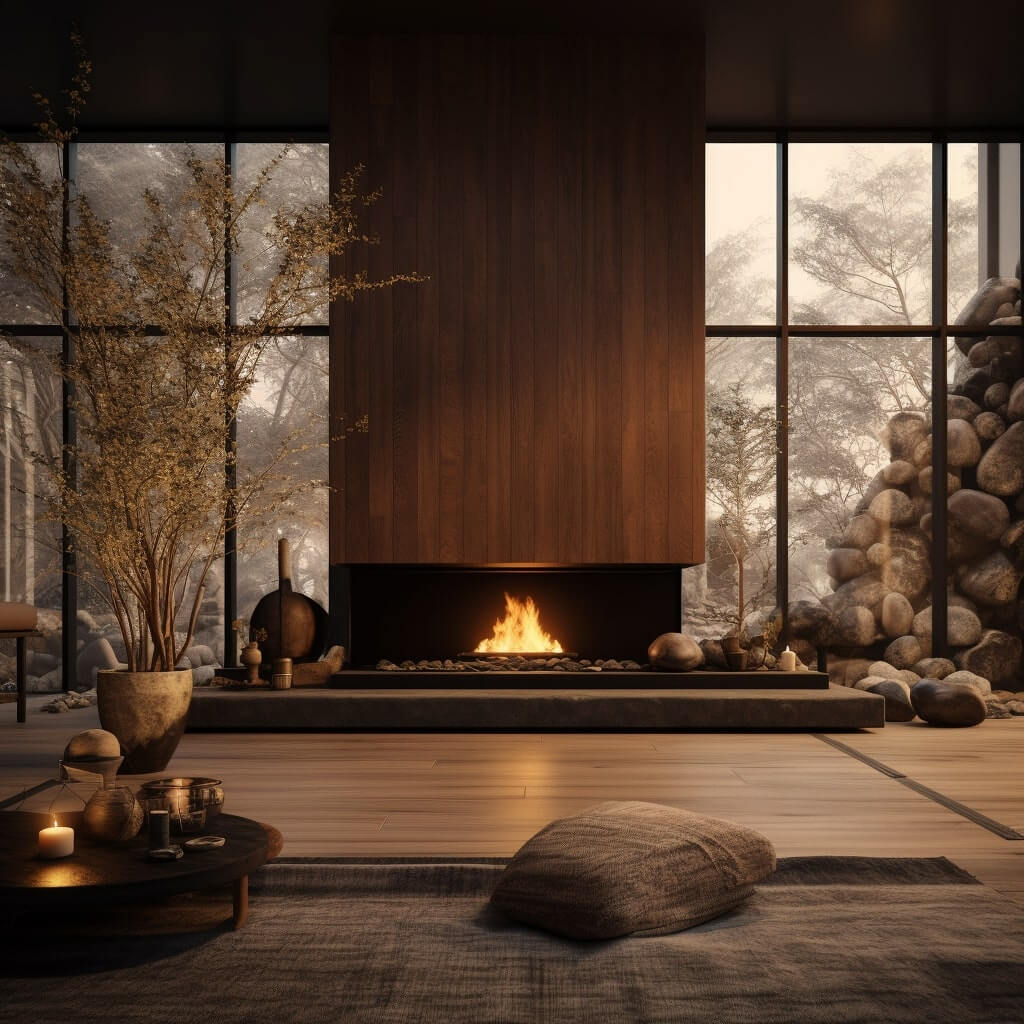
Craftsmanship in Japandi Fireplaces
No Japandi fireplace can come to life without the skillful touch of fine craftsmanship.
Every curve, every line, every angle in a Japandi fireplace tells a story of meticulous attention to detail.
The fusion of Japanese precision and Scandinavian practicality results in fireplaces that are not just functional but also aesthetically pleasing.
The design of each fireplace reflects a balance of form and function, and a careful selection of materials highlights the beauty of their natural state.
The result is a fireplace that isn’t just a heat source, but a centerpiece of your living space, demonstrating the beautiful union of art and utility that is Japandi style.
How to Choose a Japandi Fireplace
Selecting the perfect Japandi fireplace for your home can seem overwhelming, given the variety of options available.
However, by assessing the style, choosing the materials, selecting the color, and understanding the craftsmanship, you can make an informed choice that best suits your home.
Assessing the Style
Japandi style is all about balance – between form and function, between simplicity and elegance.
When choosing a fireplace, consider the existing style of your home.
Does it lean more towards the modern, with clean lines and a minimalist aesthetic?
Or does it have a more rustic charm, with an emphasis on natural materials? A Japandi fireplace can accommodate both aesthetics.
It’s all about finding the right balance for your space.
Remember, the fireplace will be a central element in your room, so it needs to harmonize with the overall design.
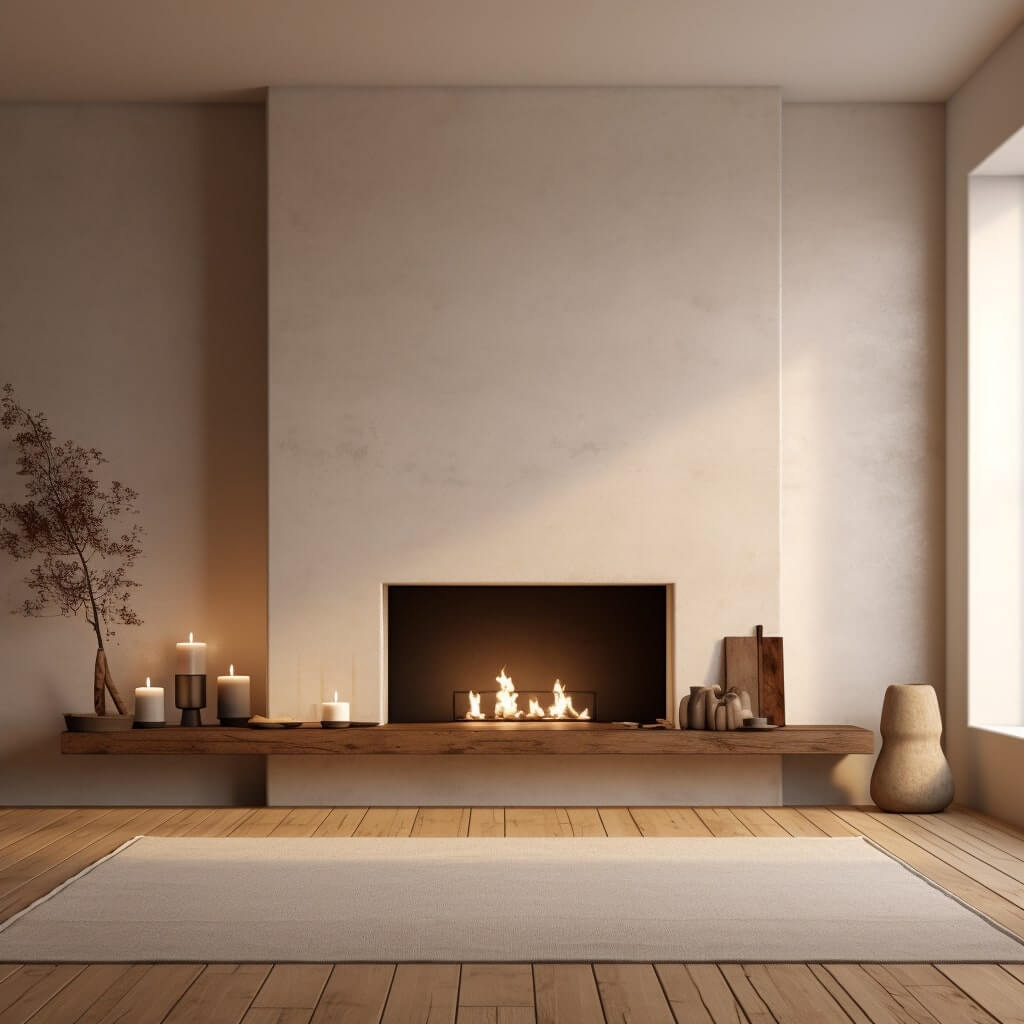
Selecting the Materials
Choosing the right materials for your Japandi fireplace is crucial. It’s not just about the aesthetics, but also about durability.
Natural materials like wood, stone, clay, or concrete are common in Japandi design. Wood brings warmth and organic appeal, while stone and clay offer an ageless, earthy feel.
Concrete, on the other hand, provides a modern, industrial touch. Consider the maintenance requirements and longevity of these materials.
Your choice should not only reflect your personal aesthetic but also withstand the test of time and use.
Picking the Color
Color plays an essential role in the Japandi style.
The palette revolves around neutral, soothing tones – whites, greys, and earthy hues. When selecting the color for your fireplace, consider the overall color scheme of your room.
The fireplace should blend seamlessly into the space, enhancing its calming ambiance.
If your room is dominantly white, a soft grey or beige fireplace can subtly stand out while maintaining the tranquil vibe.
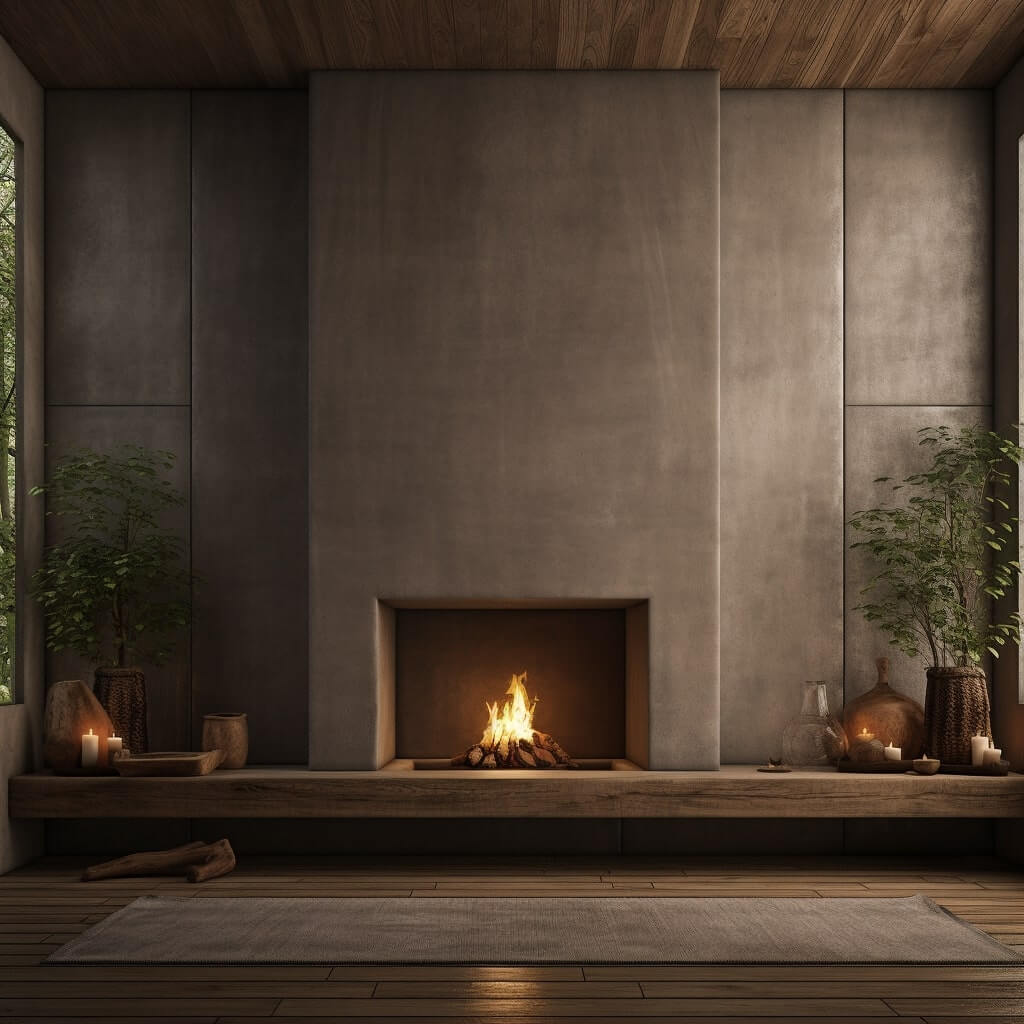
Understanding the Craftsmanship
Finally, appreciating the craftsmanship can greatly help in choosing your Japandi fireplace.
The design should reflect a thoughtful balance of form and function.
Every line, angle, and curve speaks volumes about the skill involved in its creation. When you look at a Japandi fireplace, you should be able to see the meticulous attention to detail, the precision, and the love for natural aesthetics.
A well-crafted Japandi fireplace will not only serve as a functional heat source but will also stand as a beautiful, artistic centerpiece in your room.
Incorporating a Japandi Fireplace into Your Home
Once you’ve selected your ideal Japandi fireplace, the next step is to seamlessly incorporate it into your home.
This includes considering the fireplace’s placement, decorating the mantel, choosing the right accessories, and maintaining its pristine condition.
Ideal Placement for a Japandi Fireplace
The position of your Japandi fireplace can greatly influence the ambiance of your room.
Traditionally, fireplaces are set up as the focal point in a room, and it’s no different with Japandi style.
You might consider placing it in your living room where it can create a warm, inviting atmosphere for gatherings.
If you have an open-plan home, strategically positioning the fireplace can help define different areas, such as a cozy reading corner or a tranquil meditation space.
Above all, remember the essence of Japandi – simplicity and functionality. The fireplace should enhance the room’s flow and feel, not disrupt it.
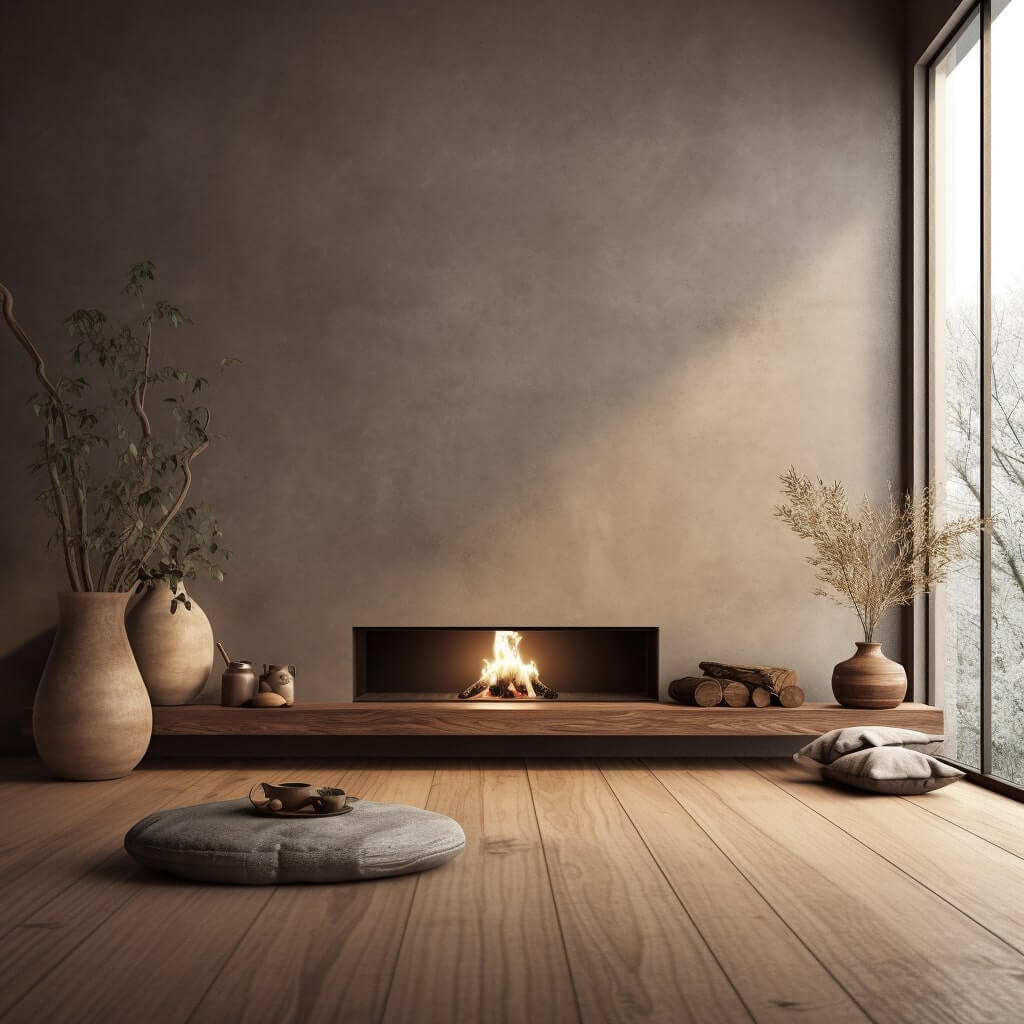
Decorating the Mantel in Japandi Style
Decorating your fireplace mantel in Japandi style decor is all about minimalism and balance. Avoid cluttering it with too many items.
Instead, select a few meaningful pieces that reflect the natural world and create a sense of calm.
Perhaps a single vase with a sprig of cherry blossom or a miniature sculpture of a pine tree. Keep the color scheme neutral and earthy, staying true to Japandi aesthetics.
Remember, in Japandi style, less is more.
Each piece you place on the mantel should contribute to a sense of serenity and balance.
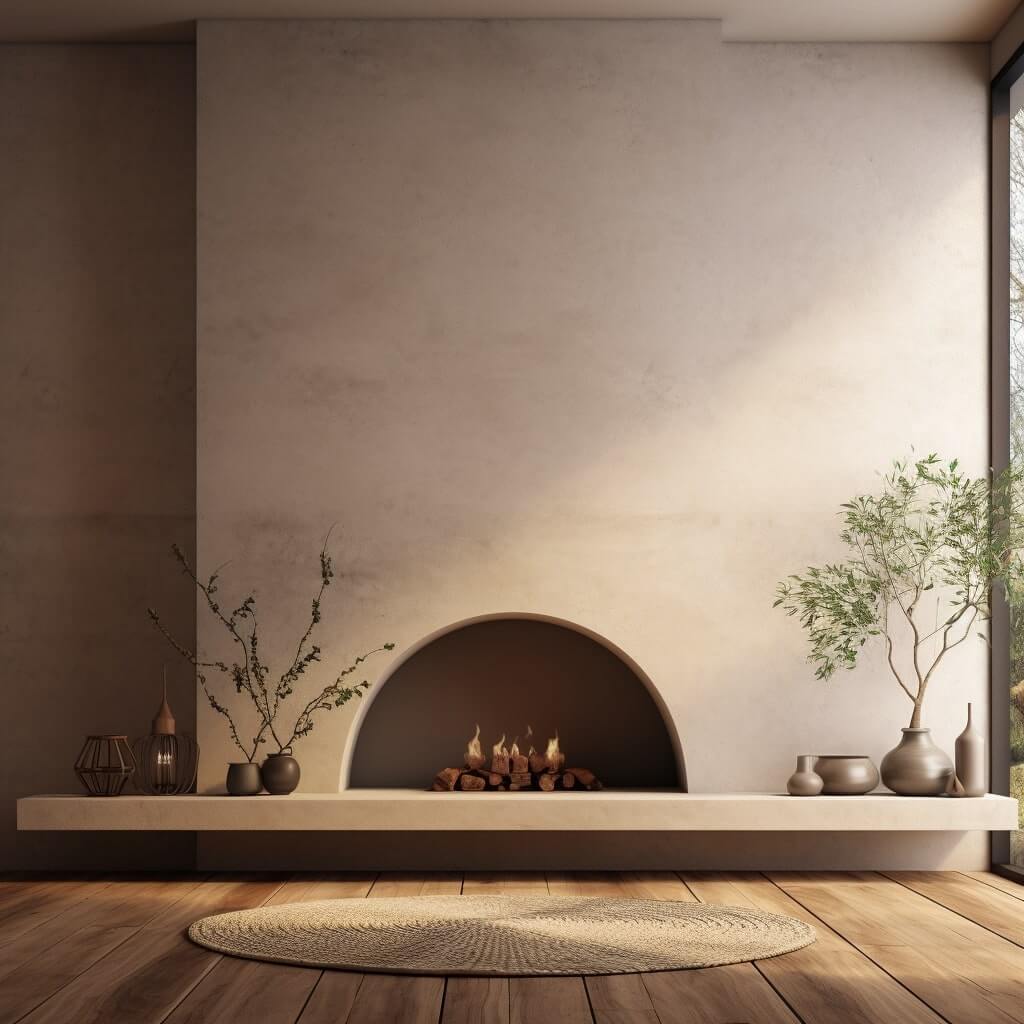
Japandi Fireplace Accessories
Accessorizing your Japandi fireplace is another chance to further imbue your space with the style’s characteristic tranquility and minimalism.
Choose tools and accessories that combine form and function, such as a minimalist fireplace screen, a sleek log holder, or a simple yet elegant fireside tool set.
Stick to neutral colors and natural materials, mirroring the fireplace’s own aesthetic.
But remember, the idea is to maintain simplicity and avoid clutter.
Only include accessories that are functional and contribute to the overall serene aesthetic.
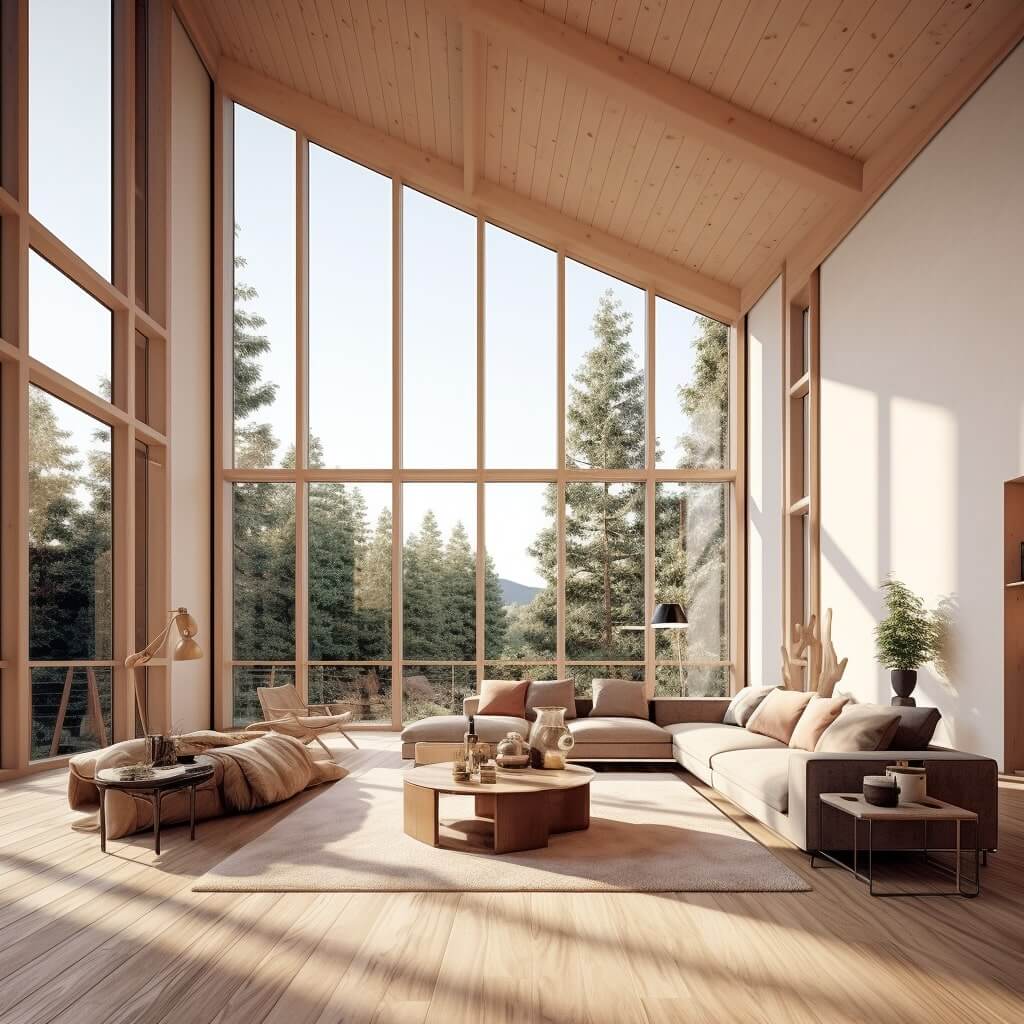
Maintaining a Japandi Fireplace
Maintaining a Japandi fireplace isn’t just about cleanliness, it’s about preserving its aesthetic and functional appeal.
Regularly clean your fireplace to avoid buildup of soot and dust. If your fireplace is made of natural materials like wood or stone, consider using eco-friendly cleaning products that won’t harm the material.
And don’t forget about the mantel and accessories – these should be kept minimal and tidy, in line with the Japandi aesthetic.
Regular maintenance will not only ensure that your fireplace operates effectively, but it will also maintain the tranquil and harmonious environment that Japandi design seeks to create.
FAQs
What is a Japandi Fireplace?
A Japandi fireplace is a fusion of Japanese and Scandinavian design philosophies, resulting in a minimalist yet warm and functional centerpiece in a home. It typically features a neutral color palette and is crafted from natural materials with a high emphasis on quality craftsmanship.
How Do I Choose the Right Japandi Fireplace for My Home?
Selecting the right Japandi fireplace involves assessing the style, choosing the materials, selecting the color, and understanding the craftsmanship. Consider the overall style and color scheme of your room, the durability and aesthetics of natural materials like wood, stone, or concrete, and the fine craftsmanship that goes into creating the fireplace.
How Do I Decorate a Japandi Fireplace?
Decorating a Japandi fireplace involves placing the fireplace in an ideal location, adorning the mantel with minimal and meaningful items, selecting minimalist and functional accessories, and maintaining the fireplace’s cleanliness and aesthetics. Remember to maintain a balance of simplicity and elegance, staying true to the Japandi aesthetic of tranquility and minimalism.
How Do I Maintain a Japandi Fireplace?
Regular cleaning is crucial to maintaining a Japandi fireplace. This includes cleaning the fireplace to prevent the buildup of soot and dust, using eco-friendly cleaning products for natural materials like wood or stone, and keeping the mantel and accessories minimal and tidy. Proper maintenance ensures both the functionality and the aesthetics of the fireplace.
What is the difference between Scandi and Japandi?
While both Scandi and Japandi embrace minimalism and functionality, Japandi blends the Scandinavian preference for coziness and light, with the Japanese emphasis on simplicity and a deep connection to nature, resulting in a style that’s both warm and simplified.
What are the characteristics of Japandi style?
Japandi style features a blend of minimalism, functionality, neutral color palettes, and use of natural materials. It prioritizes quality craftsmanship and embraces the beauty of imperfection, resulting in spaces that are tranquil, uncluttered, and intimately connected with nature.
What is the meaning of Japandi?
Japandi is a fusion of Japanese and Scandinavian design philosophies. The term combines the names of the two cultures, reflecting a design style that balances the Scandinavian love for simplicity and function with the Japanese aesthetic of serenity and connection to nature.
What is the history of Japandi?
Japandi emerged in the 21st century as designers began blending elements of traditional Japanese and Scandinavian styles. Both cultures share a respect for minimalism, functionality, and craftsmanship, making them a natural pairing. Over time, this blending of styles evolved into the Japandi movement we see today.







